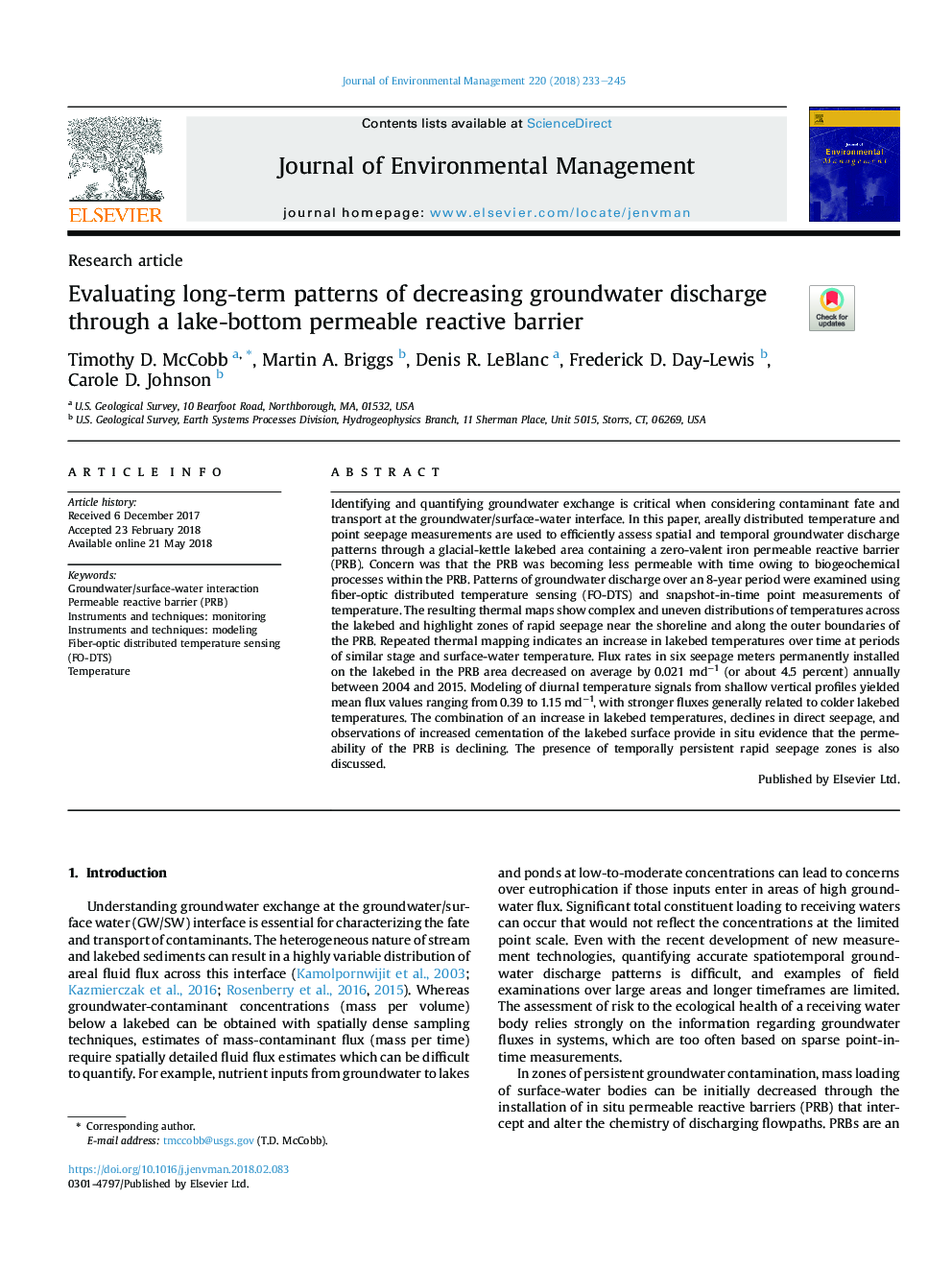| کد مقاله | کد نشریه | سال انتشار | مقاله انگلیسی | نسخه تمام متن |
|---|---|---|---|---|
| 7476582 | 1485198 | 2018 | 13 صفحه PDF | دانلود رایگان |
عنوان انگلیسی مقاله ISI
Evaluating long-term patterns of decreasing groundwater discharge through a lake-bottom permeable reactive barrier
ترجمه فارسی عنوان
ارزیابی الگوهای طولانی مدت کاهش تخلیه آبهای زیرزمینی از طریق یک مانع واکنش نفوذی پایین دریاچه
دانلود مقاله + سفارش ترجمه
دانلود مقاله ISI انگلیسی
رایگان برای ایرانیان
موضوعات مرتبط
مهندسی و علوم پایه
مهندسی انرژی
انرژی های تجدید پذیر، توسعه پایدار و محیط زیست
چکیده انگلیسی
Identifying and quantifying groundwater exchange is critical when considering contaminant fate and transport at the groundwater/surface-water interface. In this paper, areally distributed temperature and point seepage measurements are used to efficiently assess spatial and temporal groundwater discharge patterns through a glacial-kettle lakebed area containing a zero-valent iron permeable reactive barrier (PRB). Concern was that the PRB was becoming less permeable with time owing to biogeochemical processes within the PRB. Patterns of groundwater discharge over an 8-year period were examined using fiber-optic distributed temperature sensing (FO-DTS) and snapshot-in-time point measurements of temperature. The resulting thermal maps show complex and uneven distributions of temperatures across the lakebed and highlight zones of rapid seepage near the shoreline and along the outer boundaries of the PRB. Repeated thermal mapping indicates an increase in lakebed temperatures over time at periods of similar stage and surface-water temperature. Flux rates in six seepage meters permanently installed on the lakebed in the PRB area decreased on average by 0.021 mdâ1 (or about 4.5 percent) annually between 2004 and 2015. Modeling of diurnal temperature signals from shallow vertical profiles yielded mean flux values ranging from 0.39 to 1.15 mdâ1, with stronger fluxes generally related to colder lakebed temperatures. The combination of an increase in lakebed temperatures, declines in direct seepage, and observations of increased cementation of the lakebed surface provide in situ evidence that the permeability of the PRB is declining. The presence of temporally persistent rapid seepage zones is also discussed.
ناشر
Database: Elsevier - ScienceDirect (ساینس دایرکت)
Journal: Journal of Environmental Management - Volume 220, 15 August 2018, Pages 233-245
Journal: Journal of Environmental Management - Volume 220, 15 August 2018, Pages 233-245
نویسندگان
Timothy D. McCobb, Martin A. Briggs, Denis R. LeBlanc, Frederick D. Day-Lewis, Carole D. Johnson,
